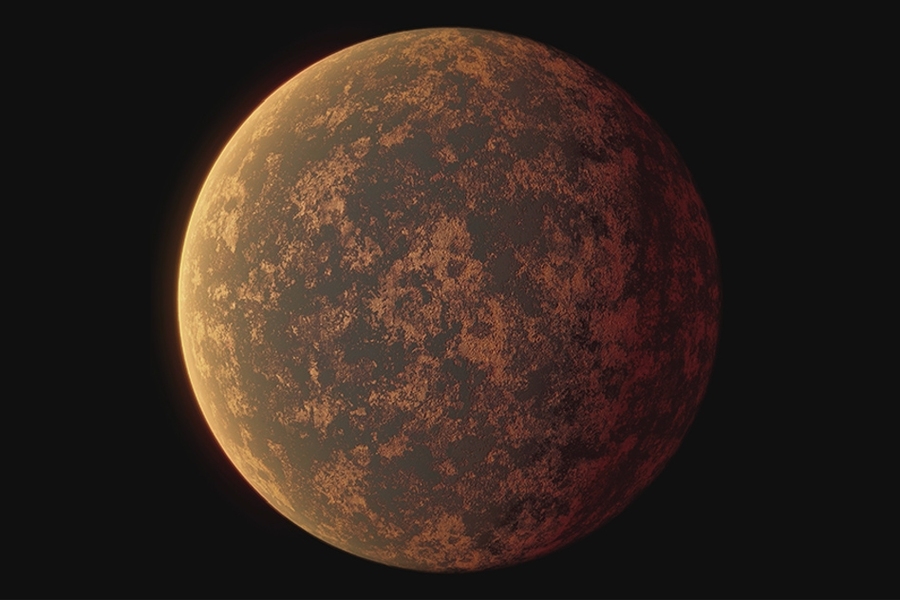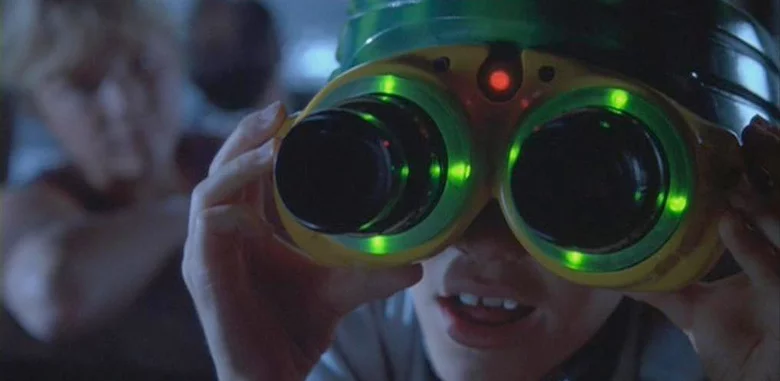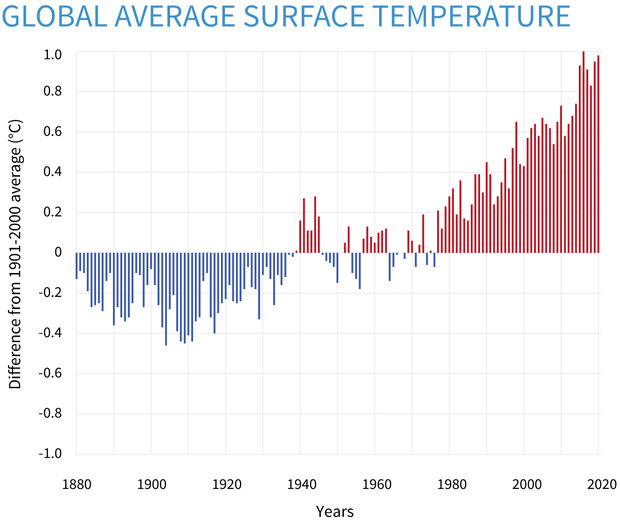This is why I love questions. Because the more we learn, the more we learn what we don’t know. There is a saying that floats around the Scientific Community, “The more our circumference of knowledge grows, to so, does the perimeter of our ignorance.” It is a fun, mathematical way of saying, “The more we know, the more we realize we have even more to learn.”
For example, before we went to the moon Science assumed there was no water on the Moon. There is no atmosphere, after all. Plus, it is more than 200-degrees Fahrenheit on the side facing the sun! How could there be water?
Then NASA researchers found water molecules. And they had to ask, “How does that happen?”
The more we learn, the more we realize we have more questions to ask! And if you’re curious about water on thr moon, I can do a post on that at some point, too.
But back to the question I was excited to receive.

The question was a follow-up to me answering a separate question about Climate Change and Hurricanes. And I think it is a reasonable question. There is a lot of science to supports that humans are causing our problems, but no one ever really dives into the basics, so I totally understand why people who look out the window every day at the weather think, “hey man, it was cold in the 1960s and hot in the 1920s. Here we are hot in the 2020s, 100 years later. Seems like a cycle, to me”
People like cycles
Sun comes up, Sun goes down. We eat, we get hungry, we eat, we get hungry. As teenagers with a job, we get paid every Friday and are broke by the following Thursday. We go from Summer to Winter and then back to Summer. We grow older, we have kids, those kids grow older, they have kids. Cycles are apart of our every day life.
And many folks are comforted by cycles. We can count on them! Jim Murray, the late LA Times sports columnist, used to write people were, “as dependable as tomorrow.”
Cycles are apart of Nature, too. The Earth’s orbit has cycles of eccentricity, obliquity, and precession. There is the water cycle and the carbon cycle. Climate even has cycles, too! Sometimes based on a combination of the orbit’s changes.
So, it is natural, in my opinion, for people to want to believe that the climate is just cycling up and down. It just feels right.
But, as I say frequently on this site, Science isn’t about feelings. It is about facts! And that was how Science started in the first place, people wanted to make sure that what they felt was true was actually true.
So let’s find out….
Better living through Physics
In order to figure out if Human’s are to blame for Climate Change, we have to go back to school first. There are a handful of equations, Laws and principles we need to re-remember.
Blackbodys
I’m betting a lot of you have a cast iron skillet around the house. And if you don’t I’d highly recommend owning one. I have four and I love cooking with them.

But your cast iron skillet is also a great – GREAT! – piece of physics. Because it is a Blackbody. This is something that was derived in the 1850s by two guys, Balfour Stewart and Gustav Kirchhoff, at about the same time without each other knowing about it (way before Twitter).
They found that something is a Blackbody if it absorbs nearly all the light emitted at it. But if you heat it up a lot, it will start to glow red. And if you heat it up a ton, it will eventually glow white hot. Because not only does it absorb all light, it also radiates all light!
Later, we discovered that our Sun is also a blackbody. And the term “blackbody” as you can imagine, has nothing to do with the color. It is about absorbing and emitting light (electromagnetic radiation). And the Sun emits all shades of electromagnetic radiation. That is why the Ozone is so important and why Astronauts have to wear special space suits. High energy electromagnetic radiation is bad. Gamma Rays don’t turn you into the Hulk, they actually just cause your atoms to get really, really messed up.
Wein’s Law
This is an equation that is applied to Blackbody Radiators. The law is named for Wilhelm Wien, who derived it in 1893. It is used to figure out what wavelength of light will be emitted maximumly (is that even a word?).
The equation, Wmax=2898/T, where “Wmax” is the max wavelength flux in micrometers and “T” is temperature,
Given this the Sun, which has a surface temperature of 5780 degrees Kelvin, should radiate at 500nm.
Wmax= 2898/5780 -> .50138 = 2898/5780 -> .50138 micrometers is about 500 nanometers.
What is 500 nanometer light?

It is right in the middle of the Visible Light spectrum. Green.
That doesn’t mean the Sun “looks” green, though. It means it emits that light at the highest value.
And we can use this equation on the Earth, too. The Earth’s temperature is about 288 Kelvin on average. Pop it into the same equation as above, Wmax=2898/288, and you get 10.06 or about 10 micrometers. What type of light is 10 micometer light?

Infrared! So the Earth’s maximum wavelength emitted is infrared.
Energy Balance
This is a pretty straight-forward concept that all of the energy in must equal all of the energy out in order for a system to remain in equilibrium. There isn’t an equation here, necessarily, nor did any one person discover it.
But for all of the solar radiational energy we receive from the Sun, it needs to all be emitted back out into space or else the planet will warm up and get too hot.
You can think of it like a blanket on your bed. Too many blankets means the heat cannot escape the system (human, bed, blankets are the system) and you get too hot. So you throw off the top blanket, to allow more heat to escape.
The Earth Energy balance is rather complex with clouds (reflectivity/albedo) and glaciers (albedo) and oceans (absorption), among other things, changing how much energy is reflected and absorbed. But we will dive into that later.
Putting some piece together
Knowing that the Sun is a Blackbody and that the earth is a Blackbody (to an extent) we can use energy balance and the STefan-Boltzman Law to figure out what the Earth’s energy balance.
Turns out it is oT4 = (S/4)(1-A)
Where…
o = 5.67×10-8 W/m2/K4
T = effective radiating temperature
S = 1370 W/m2 (Solar Flux)
A = 30% (Albedo)
This can be through of as the average temperature of earth with no atmosphere.

To solve the equation, we just have to do a little algebra.
T = 4thRoot(1370 W/m2/4 x 5.67×10-8 W/m2/K4)(1 – 0.3) = 255 Kelvin or about -18 Celsius. That is about 0.5 degrees Fahrenheit.
And since we know the Earth is actually 288 Kelvin, the difference between 288 (about 15 Celsius or 59 Fahrenheit) and 255 is….. 33 Kelvin, 33 Celsius, or 59 degrees Fahrenheit.
So the baseline Greenhouse Effect helps the surface of the earth to be about 60 degrees warmer than it should.

But if we reduce the albedo by, say, 10 percent, you get 263 Kelvin. Adding 8 baseline degrees Kelvin.
It isn’t this simple, but I’m going to use this as a simple example, that raising the temperature by 8 degrees Kelvin to the actual earth would make the average temperature 296 Kelvin, or 73 degrees Fahrenheit.
Albedo is related to glacial extent, cloud cover, and vegetation growth on a planet with no Humans. With humans it also includes things like roads versus grasslands and buildings versus trees. The albedo of asphalt is 0.05 while snow is 0.75. So as we replace snow with roads (plowing), we are decreasing the albedo pretty drastically. And thus incrementally warming the planet.

And that is just one input! And we aren’t even in the atmosphere yet.
So, what, Nick, should we never plow the roads ever again? You’re dumb.
No, I’m not saying we should do or not do anything. I’m here to offer facts. As we lower the albedo the earth, as a result, will get warmer. Every action a as a reaction.
If we choose to continue to plow roads, we need to simply balance the equation in other ways. And again, albedo is incremental stuff. So any movement incrementally in the other direction is just as helpful. Installing a white (or lighter colored) roof on a house. Planting trees. Using cement instead of asphalt. There are a plethora of options!
But this post isn’t about telling people what to do, it is answering the question, “how do we know humans are causing climate change, and it isn’t all a natural cycle?”
Into thin air
You’ve probably heard someone laugh about something disappearing into thin air when they can’t find it. but did you know that air isn’t really that thin. Each cubic meter of air on Earth contains about 10 trillion trillion (not a typo) molecules according to many, many physicists. That is a septillion.
And those molecules all have their own physical properties and interact with the electromagnetic spectrum differently.
Recall earlier when I talked about Blackbody Radiators? The earth radiates the best in infrared radiation. That is light that we can’t see. But we can sometimes feel it. If you’ve ever got to close to the coals of a fire, you can feel them radiating heat. That’s infrared.

It is also how night-vision glasses work. It is picking up light we can’t see.
But some snakes can see in infrared. Probably why they are so good at hunting at night. If memory serves, so can mosquitoes and some fish species.
Certain molecules in the atmosphere can “see” infrared, too. And they absorb it, too.

It turns out that the absorption of infrared radiation by gases in the atmosphere is a big part of keeping our planet warmer. And the strongest absorbers of infrared radiation are water vapor and carbon dioxide. Followed by Nitrous Oxide (exhaust from cars) and Methane (Natural Gas and cow flatulence)
That infrared radiation is energy. when you energize molecules they simple want to move more. And the relative movement of a group of molecules is called temperature.
So the more Carbon Dioxide that is put into the air, the more Nitrous Oxide that is put into the air and the more Methane that is put into the air, the more molecules of those compounds there are floating around ready to absorb the infrared radiation being naturally emitted by the Earth. Warming the atmosphere.
And a warmer atmosphere can hold more water vapor. And that water vapor can also absorb infrared radiation. Further warming the atmosphere.
Without humans, the amount of these gasses in the atmosphere would be much lower. According to the USGS, estimates of the global Carbon Dioxide emission rate for all degassing subaerial (on land) and submarine volcanoes lie in a range from 0.13 gigaton to 0.44 gigaton per year. A lot. Don’t get me wrong, but that is baked into the natural evolution of the planet.
Humans were projected to be responsible for 35 gigatons of Carbon Dioxide emissions back in 2010. That is about 80 to 270 times larger than the respective maximum and minimum annual global volcanic emission estimates.
Forest fires release Carbon Dioxide as well. But even the worst fire season on record in 2018 only released hundreds of millions of tons of Carbon Dioxide.
Humans are still in the gigatons.
And all of those extra molecules are up there, floating around absorbing infrared radiation, trapping heat in the atmosphere.
But big warm ups and cooldowns have happened
Yes! Yes they have. Historically, there have been times in this planet’s history when there have been very quick warm ups and cool downs. And we know this through connecting the dots between other types of molecules.
Oxygen, as it turns out, is one of the most significant keys to deciphering past climates. Oxygen comes in heavy and light isotopes, which are useful for paleoclimate research. Paleoclimate researchers are folks who look at how the atmosphere was on earth many, many, many, thousands of years ago. And in some cases, millions of years ago.
And they can do this using basic chemistry, some physics and a little math. Plus a bunch of old ice and stinky old dirt.


The ice comes from the Arctic or Antarctic and the old dirt is sediment from the ocean floor. When I was going to Oregon State University, I was lucky enough to get to see both of these piece of the climate puzzle. I was also unlucky enough to smell an old sea floor sediment core. They are very “methane-y” smelling, as Andy Reese at the University of Southern Mississippi once dubbed them.
What scientists can do is compare oxygen isotopes in the air bubbles trapped in the ice, or the oxygen used to create the shells of crustaceans that settled on the ocean floor to determine if the atmosphere was warmer or cooler.
To follow this line of thinking, we have to go back to school for a few minutes.
According to NASA, all oxygen atoms have 8 protons, but the nucleus might contain 8, 9, or 10 neutrons. “Light” oxygen-16, with 8 protons and 8 neutrons, is the most common isotope found in nature, followed by much lesser amounts of “heavy” oxygen-18, with 8 protons and 10 neutrons.
And the ratio between the two is how scientists determine warmer or cooler. How? Well they looked at how the oxygen isotope acted in day to day life.

NASA can say this better than I could probably explain it, so, they wrote: “During ice ages, cooler temperatures extend toward the equator, so the water vapor containing heavy oxygen rains out of the atmosphere at even lower latitudes than it does under milder conditions. The water vapor containing light oxygen moves toward the poles, eventually condenses, and falls onto the ice sheets where it stays.”
Or in other words, when things are warmer, there is more light Oxygen available in the atmosphere and in the ocean water.
How do they know this? They checked! Looking at coral dating back into the 1940s, they could track the oxygen isotope record and track the ratio.


Then they take this information and compare it to ice or ocean sediment that goes back way farther than just 50 years.
The ice core shown above has a ring of ash in it from a volcanic eruption that happened 3,600 years ago. Meaning all of the ice below that point has to be older than 3,600 years.
So they plot the oxygen isotopes they find as they move down in the ice. And can plot it on a graph and using other pieces of evidence as proxies (like volcanic eruptions, plot the oxygen isotopic record.

And there are cycles of ups and downs. But mans of those “steep” inclines and declines are over hundreds or thousands of years. The sharp inclines we are currently seeing with temperatures are over decades.

The Bottom Line
Those were three quick reasons – among many, many more – that the earth’s atmosphere is warming due to Human interaction more so than just some typical Earth-related cycle.
We are reducing albedo, trapping more energy in the atmosphere as we release more greenhouse gasses, and looking back (way back!) in time we see there hasn’t ever been warming as fast as we are experiencing right now.
I’m not here to tell you what to do about it. That isn’t my job. You can do nothing about it or you can take steps to reduce your part in the destruction of our planet. It is up to you.
Personally, I own a Jeep. It gets poor gas mileage. So I don’t drive it often. I try to recycle whenever possible, walk when I can (instead of driving), and use renewable electricity when possible. Small steps, sure. But not zero steps.
But that is just me. You have to decide for you.
I’m just here to tell you the Earth is warming, there are many reasons why, and it is very, very likely that many of those reasons are related to Human interaction. Stinks, but true.

